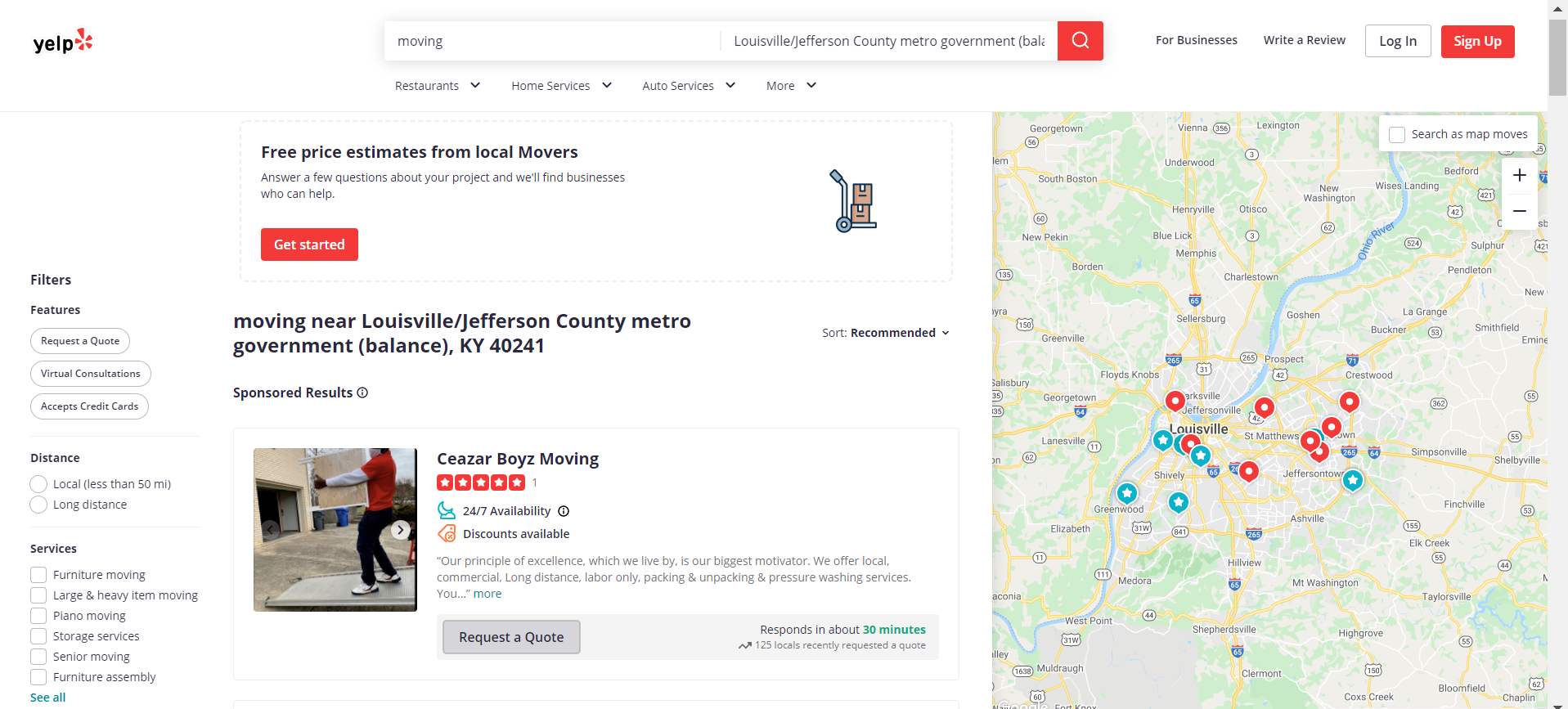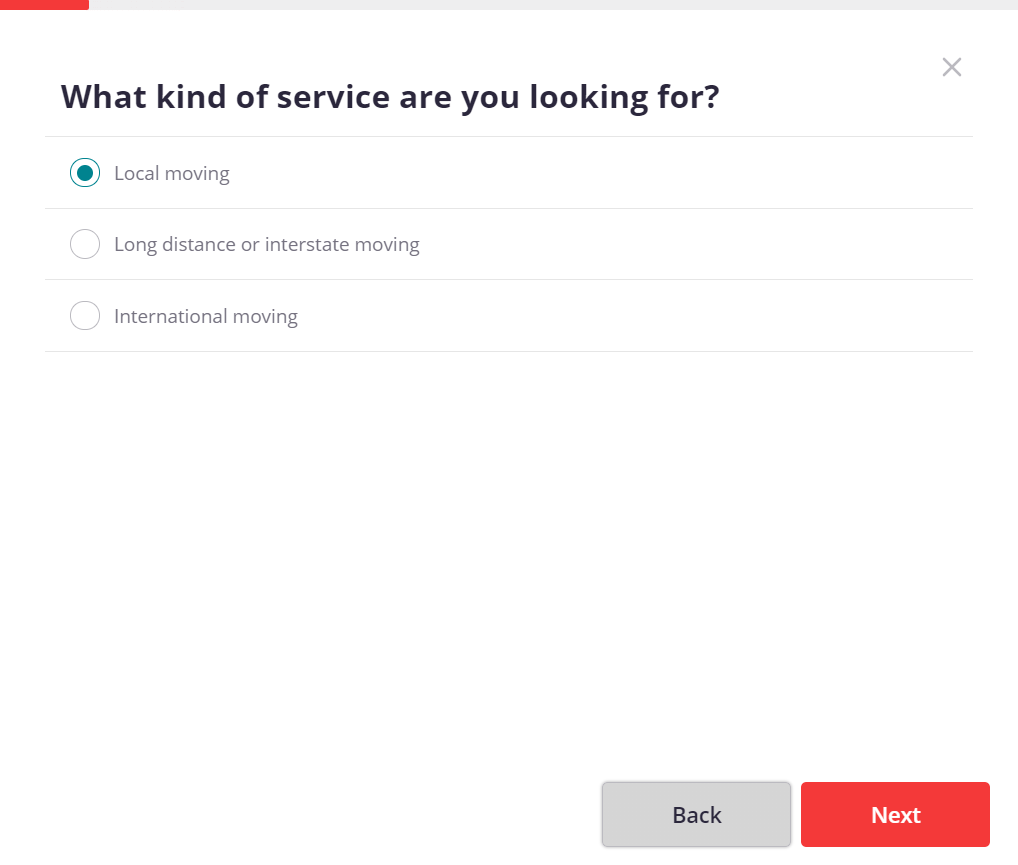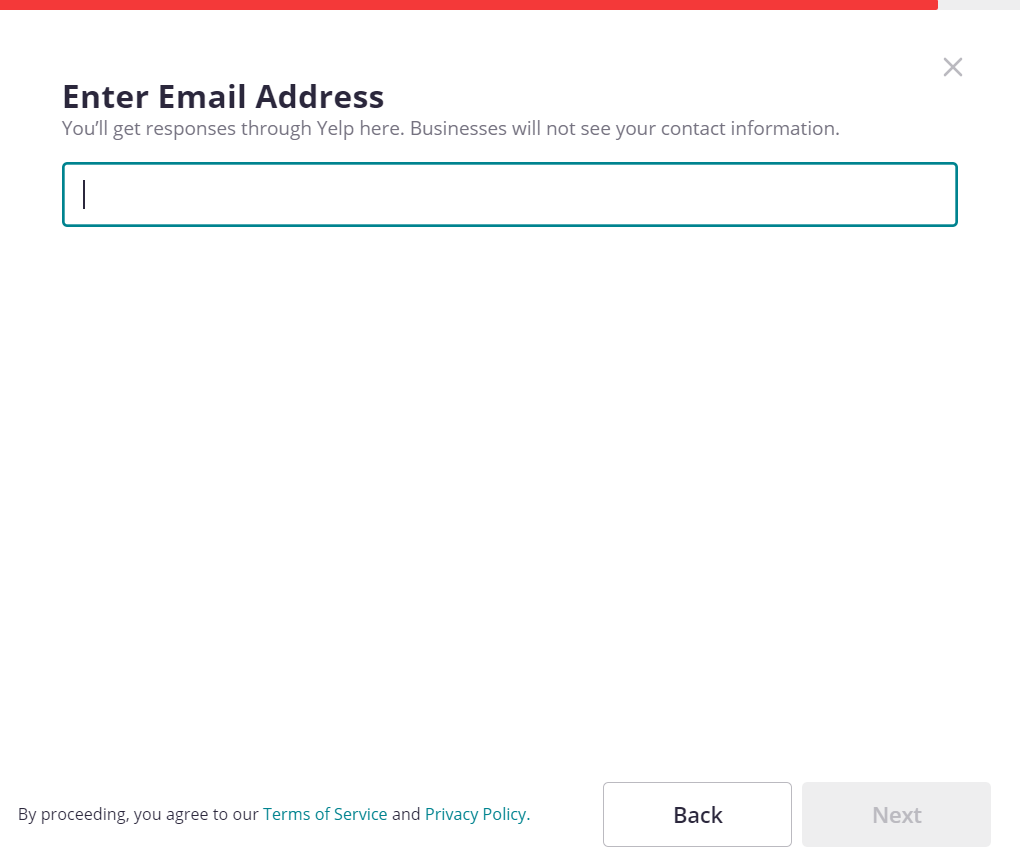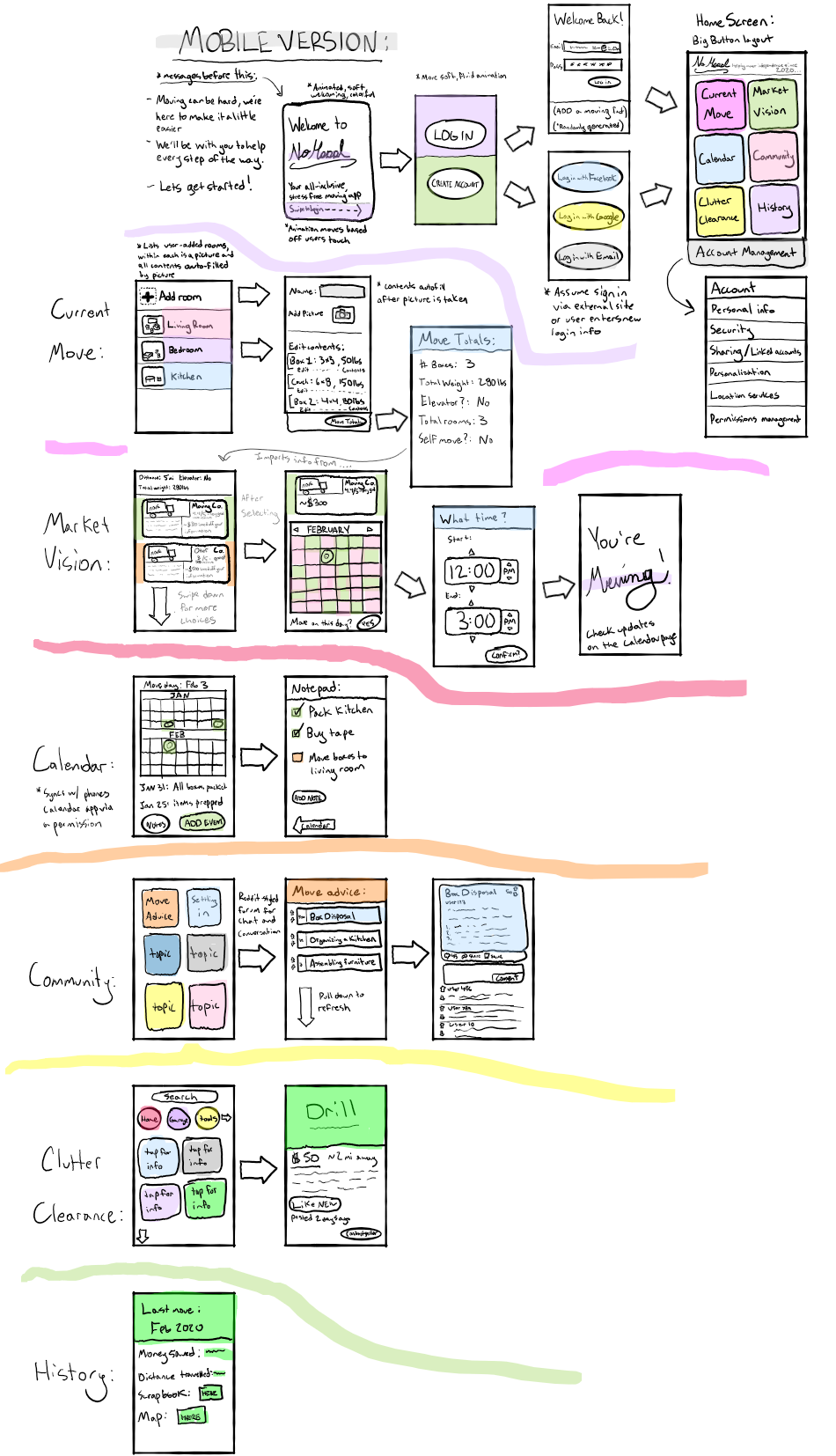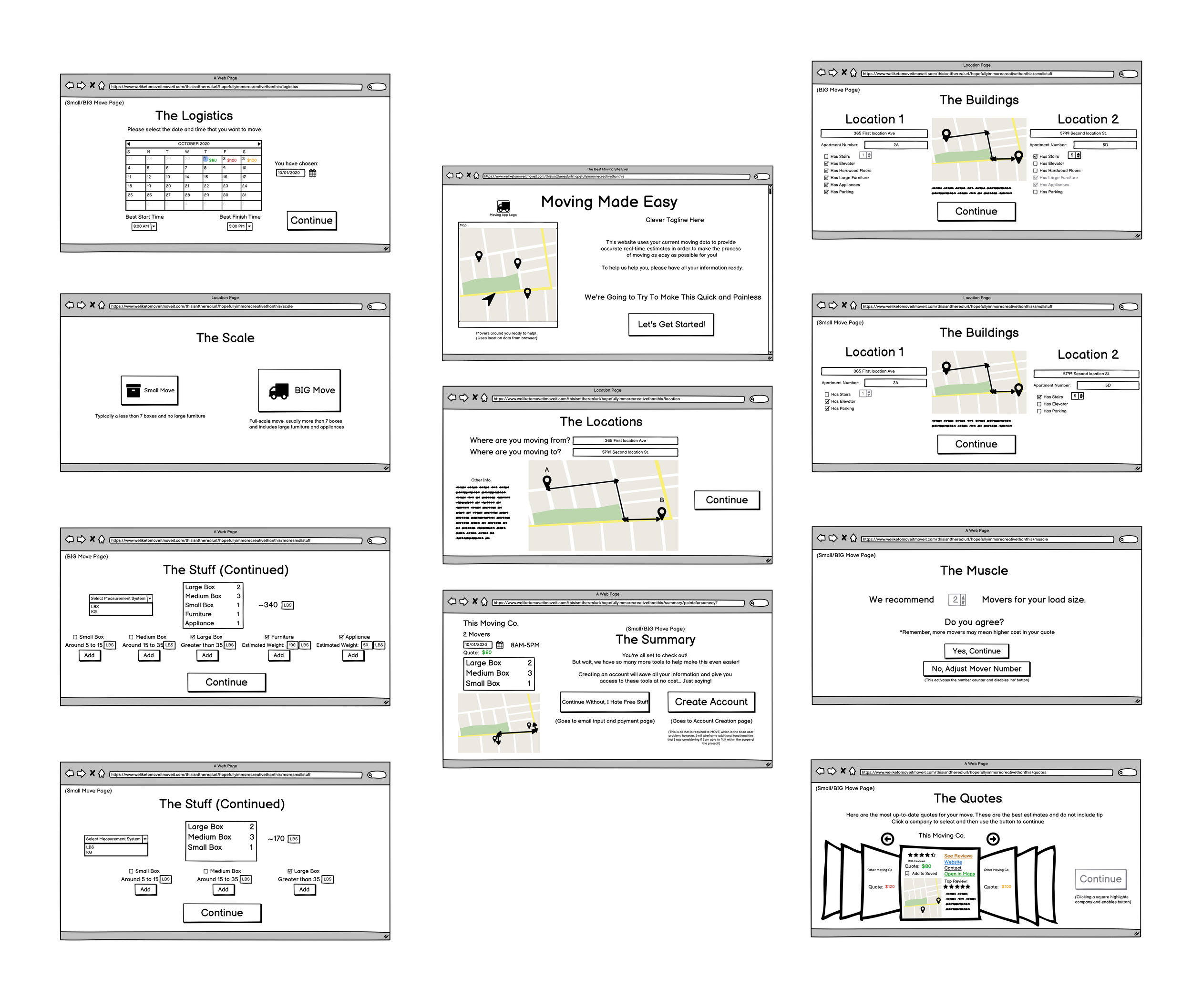
NoHassl.
A centralized moving aggregation service
Moving is hard most of the time. It shouldn’t be.
The goal of this application is to streamline the moving process, guarantee accurate quotes from local moving companies, and develop a sense of community centered around the moving process.

Role
As a school project, I assumed the role of UI designer, UX researcher and frontend developer while designing and building an application for my UI Design course at Columbia University.
Duration
~2 months (November-December 2020)
Overview
I have somehow always had an issue somewhere along the line of every move that I’ve done. When I was told to make an application to help students with a major issue that they may have in university, the moving process immediately came to mind.
Reliable quotes are hard to come by when selecting a company, so I decided to ideate through the notion of unifying moving companies through an application that provides reliable quotes, a sense of community, and the ability to remove the feeling of dread when beginning to plan for a move.
Team
Personal/School Project
Tools
Pen & Paper, Balsamiq, Figma, HTML/CSS
Scope
UI/UX Design, User Research, Usability Testing, Prototyping, Wireframing, Frontend Development
Location
Louisville, KY (Remote)
Goal
“To simplify the process for a user to get a quick, accurate quote for their move.”
I always found the process of receiving an estimated quote for moves online to be completely unreliable and unavailable in real-time. Pairing this pain with the many other parts of organizing a move, things can get overwhelming fast. The aim of this service is to not only minimize the number of complex pieces associated with this process, but also centralizing them in one organized place where the user can control their entire move.

Ready, Go!
To transform my goal into a problem statement, I did a bit of rephrasing and made it into a hypothesis that I wanted to confirm:
“Movers find the process of obtaining moving quotes from companies to be problematic and time-consuming.”
To validate the need for more accurate moving quotes and expand upon possible features to solve this, I began with some research that could help me build some preliminary objectives and establish goals.
I developed an initial research plan that included various techniques to help me:
Get to know my users through data
Assess the market and get a feel for the competition
As this proposed application was supposed to cater to a specific population, I decided to first define this group as:
“Average movers seeking quick access to accurate quotes.“
I originally limited it further to just university students, but decided that expanding it to movers as a whole was something that could benefit a larger population and provide more actionable data.

Research Baselines
Qualitative
We were in the midst of another virtual semester thanks to our friend Covid-19. For safety, I conducted my interviews virtually. I wanted to get some information about both mobile and desktop solutions, as there are notable presences on both platforms.
I interviewed 6 people between the ages of 21 to 33, I asked 3 individuals to do a mobile interview and the other three to use their laptop.
For both my laptop and mobile users I compiled a list of moving sites that I have previously made task analyses for and sent it to them beforehand. I hopped on Facetime or Zoom with them, received their permission to record, asked them to choose a location near them, and then gave them the goal of getting an estimate using the sites I provided on what it would cost to move there.
As they moved through this process, I asked them to think out loud and talk through every action, every thought, and every feeling that came up as they used these sites. I took notes during the process and put together an affinity map based on their responses.
Quantitative
To provide some background on the moving process, I did some secondary research and gathered some data that may reveal where additional opportunities or pain points may lie.
The research revealed that a lot of people move each year, about 10.1% of the population or 32,252,000 people.
Also, despite all the household names like U-Haul and PODS, the moving industry is comprised mostly of small businesses.
47.8 percent of moving companies in the U.S. have fewer than 5 employees. Only 8.5 percent of moving companies employ more than 100 people. That means there are a ton of moving companies out there, around 7,000 of them just in the U.S. Those 7,000 different moving companies operate 13,900 locations across the country.
Additionally, it was interesting to learn that more people make DIY moves each year than use professional services, whether they be full-service moving companies, freight companies, or container moving companies.
Here’s the breakdown:
Professional movers: Around 650,000 each year
DIY with a rented moving truck: Around 1 million each year
DIY with no assistance at all: Around 1.35 million each year
Average cost for an interstate move: $4,100
Average cost for an in-state move: $980
Each local mover hired charges, on average, $25 per hour.
Forming Opportunity
I went on to synthesize the results from my interviews in an affinity map. Even with giants like Google and Moving.com out there, my initial hypothesis proved to be valid. Users were having feelings of sunk costs due to investing time in answering long questionnaires only to be met with an email signup screen or a notification saying that someone would get back to them in 24 hours.
There were individual comments about elements of the interfaces that were confusing, however, for this phase of the process I wanted to focus on the feeling associated with the outcome of their efforts. In many of those cases, that feeling was frustration or disappointment.
There is an opportunity to consolidate multiple moving services into one platform to provide rapid quote generation and resolve a number of user pain points.

Comparative Analysis
Before constructing my own solution through NoHassl, I figured it worthwhile to conduct an analysis of the most prominent competition in the moving space. I gathered user feedback from my interviews on these products to weigh the effectiveness of their methods, as well as to figure out what specifically they were missing that users really wanted.
Lets take a look at what’s out there:
Yelp!
Yelp! serves as a multi-function search engine that encompasses many different industries, including entertainment, food, auto, home services, and more. It is an excellent platform for comparing many different companies and its review system is clear and simple.
However, because this service attempts to be so multi-faceted, it fails to focus on the aspect of moving that we are attempting to solve: real-time quote comparisons.
Their ‘free price estimates’ button gives you no estimate at all. It actually sends out emails to all local moving companies and creates a massive hassle. According to users, this left them frustrated in the end and with an inbox full of mostly ad-based emails and subscriptions to mailing lists that they didn’t want.
2. TaskRabbit
TaskRabbit brands itself as a sort of Craiglist-type freelance platform where a user can find any number of ‘taskers’ who may be able to solve any given problem that they have.
In the examples above, I indicated that I was moving and was then given this group of individuals to choose from. This differs from Yelp! in that no specific company is being used, but rather lone people acting as their own workforce. Where this interface wins is its clear estimate of the pricing of any given task, as well as the top stats that a user would want to know to trust a tasker/company. Here, a user knows just how much they will spend with any person they select to finish their task.
These people, though, are not full-scale companies and do not have the resources or manpower to execute larger moves cheaply or efficiently. Our solution will want to emulate the pricing and review standards of TaskRabbit.
Merging the Concepts
My next step was bringing together all the information collected from the interviews, comparative analysis, and research.
Comments on the ability to receive an accurate quote and re-entering the same information across multiple websites came up frequently. Additionally, though, the interviews revealed some valuable data through observations like,
“I like all the information available to me here like ratings, but it would be so much easier if there was something that I could manage all this on where I could compare quotes between them as well.”
“I would prefer something simple and easy to read so I wouldn’t be bouncing around all over the internet like I have been”
“...the page is too busy and uninformative. I don't want to have to scroll for a long time and I want simplified information. Most websites appear drawn out. I usually get most of my initial information from Google Maps and then save the company for later.”
This data revealed a number of pain points, and with them, the opportunity to brainstorm solutions:
The websites she browsed to did not have the tools she wanted.
Creation of a moving hub that contained a suite of tools to assist with the moving process
If one website did not work out, she would have to re-enter all the previous information if she wanted a quote from another.
It would be ideal to take in information once and provide quotes for as many companies as possible
Moving in between multiple applications was cumbersome to the entire process
A simple UI inside one interface would be preferred to deter user exhaustion
Using the insights that were collected from the data, I decided to incorporate the idea of using multiple services to assist a user after they get a moving quote into the concept of the NoHassl application. These services manifested themselves through my early wireframes.
Lo-fi Wireframes, Mobile
The data alluded to the possibility of having both a desktop and mobile solution. I kept that in mind as I started iterating on wireframes designs through initial usability testing.
I had a number of ideas, features, and tools floating around in my head, so I was curious to put them to the screen of my Microsoft Surface and get some preliminary user feedback on accessibility, readability, and efficiency of the low-fidelity prototype.
Initial Feedback
Users responded favorably to the variety of tools that were brainstormed to assist in the moving process
Lo-fi Wireframes, Desktop
Using a desktop design software recommended by my professor called Balsamiq, I threw together an initial draft of the pages and services that I envisioned for the desktop application/web serivce.
Prototyping the Experience
For fun, I put together a customer experience map that explored how a user may come across NoHassl, as well as plotting an onboarding journey for them as they progressed through using the application.
Exploring this was a fun little break from the nitty-gritty of the project and allowed me to take a couple moments to visualize a world where the app exists; surely a fun moment for any designer.

As a school project, naturally, there was a final report.
If you’re interested in seeing things in a much more boring manner, you can check it out below!
After Action Review (AAR)
Adapting to a Remote Environment
These spring and fall semesters marked the beginning of my virtual design career when the coronavirus pandemic hit in March. Getting feedback, conducting interviews, and usability testing became difficult as the world was adjusting to its pivot into an online work environment. I can recall many moments where the hardest battles were with Zoom fatigue and Slack exhaustion, yet, I became more proficient with task organization, rapid prototyping, and clear communication.
Check Yourself Before You Wreck Yourself
At multiple points in the projects, I stopped and wondered to myself… Am I trying to do too much?
In the end, I think the answer to that question was yes. Feature after feature, the idea behind NoHassl became slightly more bloated and grew to a point where we couldn’t iterate again that far into the project. If I were to do it over again, I would add a period to our sync meetings where the team could pause and reflect on the point, “Is this being done as well as it can be? Are we currently doing anything wrong?”
Taking a tactical pause to stop and reassess forward progress is critical to checking yourself and figuring out if maybe you’re doing things a little too fast.
Iterate the Prototypes
When I hit the lo-fi wireframe stage, I think I should have spent more time iterating those concepts and refining the interfaces at a low-cost level before moving onto the mid and hi-fi prototypes. Doing this would have allowed my to make quick and efficient changes in the overall design without falling victim to the sunk cost fallacy that I believe happened near the end of the project for me.


